 W
WAnne Askew was an English writer, poet, and Protestant martyr who was condemned as a heretic in England in the reign of Henry VIII of England. Along with Margaret Cheyne, wife of Sir John Bulmer, who was similarly tortured and executed after the Pilgrimage of Grace in 1537, she is the only woman on record known to have been both tortured in the Tower of London and burnt at the stake. She is also one of the earliest known female poets to compose in the English language and the first Englishwoman to demand a divorce.
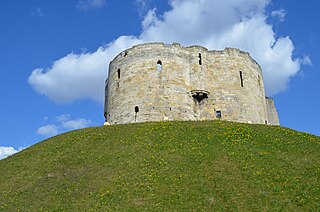 W
WRobert Aske was an English lawyer who became a leader of rebellion in Yorkshire. He pushed the Pilgrimage of Grace uprising against the dissolution of lesser monasteries in 1536; King Henry VIII had him executed for treason on 12 July 1537.
 W
WAnne Askew was an English writer, poet, and Protestant martyr who was condemned as a heretic in England in the reign of Henry VIII of England. Along with Margaret Cheyne, wife of Sir John Bulmer, who was similarly tortured and executed after the Pilgrimage of Grace in 1537, she is the only woman on record known to have been both tortured in the Tower of London and burnt at the stake. She is also one of the earliest known female poets to compose in the English language and the first Englishwoman to demand a divorce.
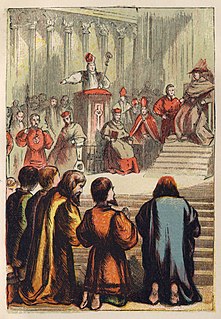 W
WRobert Barnes was an English reformer and martyr.
 W
WSister Elizabeth Barton, known as "The Nun of Kent", "The Holy Maid of London", "The Holy Maid of Kent" and later "The Mad Maid of Kent", was an English Catholic nun. She was executed as a result of her prophecies against the marriage of King Henry VIII of England to Anne Boleyn.
 W
WAnne Askew was an English writer, poet, and Protestant martyr who was condemned as a heretic in England in the reign of Henry VIII of England. Along with Margaret Cheyne, wife of Sir John Bulmer, who was similarly tortured and executed after the Pilgrimage of Grace in 1537, she is the only woman on record known to have been both tortured in the Tower of London and burnt at the stake. She is also one of the earliest known female poets to compose in the English language and the first Englishwoman to demand a divorce.
 W
WThomas Benet from Cambridge, was an English Protestant martyr during the reign of King Henry VIII. In 1524, he moved to Torrington, North Devon, with his wife and family so that he could exercise his religious conscience more freely in a county where no one knew him. He was executed by burning on 15 January 1531, for heresy, at Livery Dole outside Exeter in Devon, under the supervision of Sir Thomas Dennis (c.1477-1561) of Holcombe Burnell, near Exeter, then Sheriff of Devon.
 W
WThomas Bilney was an English Christian martyr.
 W
WAnne Boleyn was Queen of England from 1533 to 1536 as the second wife of King Henry VIII. Their marriage, and her execution for treason and other charges by beheading, made her a key figure in the political and religious upheaval that marked the start of the English Reformation. Anne was the daughter of Thomas Boleyn, 1st Earl of Wiltshire, and his wife, Lady Elizabeth Howard, and was educated in the Netherlands and France, largely as a maid of honour to Queen Claude of France. Anne returned to England in early 1522, to marry her Irish cousin James Butler, 9th Earl of Ormond; the marriage plans were broken off, and instead she secured a post at court as maid of honour to Henry VIII's wife, Catherine of Aragon.
 W
WGeorge Boleyn, Viscount Rochford was an English courtier and nobleman who played a prominent role in the politics of the early 1530s, and was the brother of Queen Anne Boleyn, from 1533 the second wife of King Henry VIII and thus the maternal uncle of Queen Elizabeth I. Following his father's promotion in the peerage in 1529 to Earl of Wiltshire and Earl of Ormond, he adopted his father's junior title Viscount Rochford as a courtesy title. He was accused of incest with his sister Anne during the period of her trial for high treason, as a result of which both were executed.
 W
WEdward Stafford, 3rd Duke of Buckingham was an English nobleman. He was the son of Henry Stafford, 2nd Duke of Buckingham, and Katherine Woodville, and nephew of Elizabeth Woodville and King Edward IV. Thus Edward Stafford was a first cousin once removed of King Henry VIII. He was convicted of treason and executed on 17 May 1521.
 W
WSir Nicholas Carew KG, of Beddington in Surrey, was an English courtier and diplomat during the reign of King Henry VIII. He was executed for his alleged part in the Exeter Conspiracy.
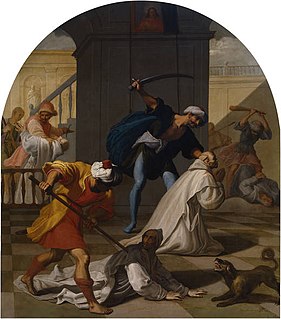 W
WThe Carthusian martyrs are those members of the Carthusian monastic order who have been persecuted and killed because of their Christian faith and their adherence to the Catholic religion. As an enclosed order the Carthusians do not, on principle, put forward causes for their members, though causes have been promoted by others on their behalf.
 W
WThomas Cromwell, 1st Earl of Essex, was an English lawyer and statesman who served as chief minister to King Henry VIII from 1532 to 1540, when he was beheaded on orders of the king.
 W
WThomas Fiennes, 9th Baron Dacre was an English aristocrat notable for his conviction and execution for murder.
 W
WThomas Darcy, 1st Baron Darcy of Darcy or of Temple Hurst, was an English nobleman, the only son, and heir, of Sir William Darcy and his wife, Euphemia Langton, the daughter of Sir John Langton. Darcy was opposed to the Dissolution of the Monasteries, and for his role in the Pilgrimage of Grace was convicted of high treason for delivering up Pontefract Castle to the rebels. He was executed on Tower Hill 30 June 1537.
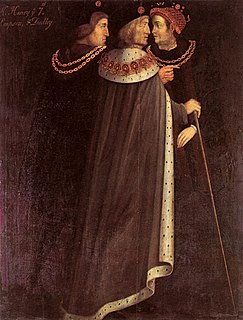 W
WEdmund Dudley was an English administrator and a financial agent of King Henry VII. He served as a leading member of the Council Learned in the Law, Speaker of the House of Commons and President of the King's Council. After the accession of Henry VIII, he was imprisoned in the Tower of London and executed the next year on a treason charge. While waiting for his execution he wrote The Tree of Commonwealth. Edmund Dudley was also the grandfather of Robert Dudley, 1st Earl of Leicester, a favourite of Henry VIII's daughter, Elizabeth I.
 W
WEly is a cathedral city in Cambridgeshire, England, about 14 miles (23 km) north-northeast of Cambridge and about 80 miles (129 km) by road from London. Æthelthryth founded an abbey at Ely in 673; the abbey was destroyed in 870 by Danish invaders and was rebuilt by Æthelwold, Bishop of Winchester, in 970. Construction of the cathedral was started in 1083 by a Norman abbot, Simeon. Alan of Walsingham's octagon, built over Ely's nave crossing between 1322 and 1328, is the "greatest individual achievement of architectural genius at Ely Cathedral", according to architectural historian Nikolaus Pevsner. Building continued until the dissolution of the abbey in 1539 during the Reformation. The cathedral was sympathetically restored between 1845 and 1870 by the architect George Gilbert Scott. As the seat of a diocese, Ely has long been considered a city; in 1974, city status was granted by royal charter.
 W
WSir Richard Empson, minister of Henry VII, was a son of Peter Simpson. Educated as a lawyer, he soon attained considerable success in his profession, and in 1491 was a Knight of the shire for Northamptonshire in Parliament, and Speaker of the House of Commons.
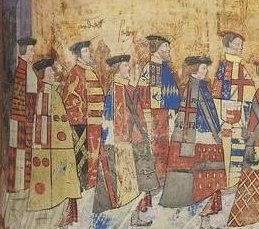 W
WHenry Courtenay, 1st Marquess of Exeter, 2nd Earl of Devon, KG, PC, feudal baron of Okehampton, feudal baron of Plympton, of Tiverton Castle, Okehampton Castle and Colcombe Castle all in Devon, was a grandson of King Edward IV, nephew of the queen consort, Elizabeth of York and a first cousin of King Henry VIII. Henry Courtenay was a close friend of Henry VIII's, having "been brought up of a child with his grace in his chamber."
 W
WWilliam Exmew was an English Catholic priest and Carthusian hermit. He was hanged, drawn, and quartered at Tyburn and is honored as a martyr by the Catholic Church. Exmew and his brother Carthusian martyrs were beatified by Pope Leo XIII on 9 December 1886.
 W
WHugh Faringdon, earlier known as Hugh Cook, later as Hugh Cook alias Faringdon and Hugh Cook of Faringdon, was a Benedictine monk who presided as the last Abbot of Reading Abbey in the English town of Reading. At the dissolution of the monasteries under King Henry VIII of England, Faringdon was accused of high treason and executed. He was declared a martyr and beatified by the Catholic Church in 1895.
 W
WJohn Fisher, was an English Catholic bishop, cardinal, and theologian. Fisher was also an academic, and eventually served as Chancellor of the University of Cambridge. He was canonized a saint by Pope Pius XI.
 W
WJohn Forest was an English Franciscan Friar and martyr. Confessor to Queen Catherine of Aragon, Forest was burned to death at Smithfield for heresy, in that he refused to acknowledge the King as head of the church.
 W
WSir Adrian Fortescue was a courtier at the court of King Henry VIII of England who was executed in 1539 and later beatified as a Roman Catholic martyr.
 W
WJohn Frith was an English Protestant priest, writer, and martyr.
 W
WThomas Harding was a sixteenth-century English religious dissident who, while waiting to be burnt at the stake as a Lollard in 1532, was struck on the head by a spectator with one of the pieces of firewood, which killed him instantly.
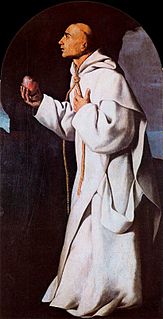 W
WSaint John Houghton, O.Cart., was a Carthusian hermit and Catholic priest and the first English Catholic martyr to die as a result of the Act of Supremacy by King Henry VIII of England. He was also the first member of his order to die as a martyr. He is among the Forty Martyrs of England and Wales.
 W
WCatherine Howard was queen consort of England from 1540 until 1541 as the fifth wife of Henry VIII. She was the daughter of Lord Edmund Howard and Joyce Culpeper, cousin to Anne Boleyn, and niece to Thomas Howard, 3rd Duke of Norfolk. Thomas Howard was a prominent politician at Henry's court, and he secured her a place in the household of Henry's fourth wife, Anne of Cleves, where she caught the King's interest. She married him on 28 July 1540 at Oatlands Palace in Surrey, just 19 days after the annulment of his marriage to Anne. He was 49, and she was still a teenager, at about 17 years old.
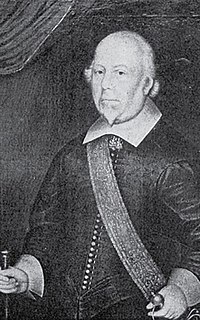 W
WJohn Hussey, 1st Baron Hussey of Sleaford was Chief Butler of England from 1521 until his death. He was a member of the House of Lords, and a Chamberlain to King Henry VIII's daughter, Mary I of England.
 W
WRobert Barnes was an English reformer and martyr.
 W
WThomas FitzGerald, 10th Earl of Kildare, also known as Silken Thomas, was a leading figure in 16th-century Irish history.
 W
WSt. Robert Lawrence was one of the Forty Martyrs of England and Wales. He was hanged, drawn, and quartered at Tyburn for declining to sign the Oath of Supremacy. His feast day is 4 May.
 W
WThe Carthusian Martyrs of London were the monks of the London Charterhouse, the monastery of the Carthusian Order in central London, who were put to death by the English state in a period lasting from the 4 May 1535 till the 20 September 1537. The method of execution was hanging, disembowelling while still alive and then quartering. Others were imprisoned and left to starve to death. The group also includes two monks who were brought to that house from the Charterhouses of Beauvale and Axholme and similarly dealt with. The total was 18 men, all of whom have been formally recognized by the Catholic Church as martyrs.
 W
WHumphrey Middlemore, was an English Catholic priest and Carthusian hermit, who was executed for treason during the Tudor period. He is considered a martyr by the Catholic Church, and, along with other members of his religious order to meet that fate, was beatified by Pope Leo XIII on 9 December 1886.
 W
WSir Thomas More, venerated in the Catholic Church as Saint Thomas More, was an English lawyer, social philosopher, author, statesman, and noted Renaissance humanist. He also served Henry VIII as Lord High Chancellor of England from October 1529 to May 1532. He wrote Utopia, published in 1516, which describes the political system of an imaginary island state.
 W
WSebastian Newdigate, was the seventh child of John Newdigate, Sergeant-at-law. He spent his early life at court, and later became a Carthusian monk. He was executed for treason on 19 June 1535 for his refusal to accept Henry VIII's assumption of supremacy over the Church in England. His death was considered a martyrdom, and he was beatified by the Catholic Church.
 W
WSir Thomas Percy was a participant in the 1537 Bigod's Rebellion in the aftermath of the Pilgrimage of Grace, a Roman Catholic uprising against King Henry VIII. He was convicted of treason and hanged, drawn and quartered at Tyburn. The Catholic Encyclopedia (1913) states that he "is considered a martyr by many".
 W
WRhys ap Gruffydd (1508–1531) was a powerful Welsh landowner who was accused of rebelling against King Henry VIII by plotting with James V of Scotland to become Prince of Wales. He was executed as a rebel. He married Lady Catherine Howard, the daughter of Thomas Howard, 2nd Duke of Norfolk and his second wife Agnes Tilney.
 W
WBlessed John Rochester was an English Catholic priest, Carthusian monk and martyr. He was hanged at York for refusing to concede King Henry VIII's supremacy over the church.
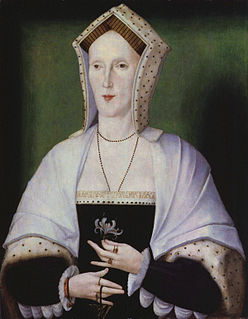 W
WMargaret Pole, Countess of Salisbury, was an English peeress. She was the daughter of George, Duke of Clarence, the brother of kings Edward IV and Richard III. Margaret was one of two women in 16th-century England to be a peeress in her own right with no titled husband. One of the few surviving members of the Plantagenet dynasty after the Wars of the Roses, she was executed in 1541 at the command of Henry VIII, who was the son of her first cousin Elizabeth of York. Pope Leo XIII beatified her as a martyr for the Catholic Church on 29 December 1886.
 W
WAdam Sedbar or Sedbergh was the 23rd and last Abbot of Jervaulx Abbey in Wensleydale, Yorkshire.
 W
WEdmund de la Pole, 3rd Duke of Suffolk, 6th Earl of Suffolk, KG, Duke of Suffolk, was a son of John de la Pole, 2nd Duke of Suffolk and his wife Elizabeth of York.
 W
WHenry Howard, Earl of Surrey, KG,, was an English nobleman, politician and poet. He was one of the founders of English Renaissance poetry and the last known execution by King Henry VIII. He was a first cousin of both Queen Anne Boleyn and Queen Catherine Howard, second and fifth wives of King Henry VIII. His name is usually associated in literature with that of Sir Thomas Wyatt, who was the older poet of the two. He was the son of Thomas Howard, Earl of Surrey and when his father became Duke of Norfolk (1524) the son adopted the courtesy title of Earl of Surrey. Owing largely to the powerful position of his father, Surrey took a prominent part in the Court life of the time, and served as a soldier both in France and Scotland. He was a man of reckless temper, which involved him in many quarrels, and finally brought upon him the wrath of the ageing and embittered Henry VIII. He was arrested, tried for treason and beheaded on Tower Hill.
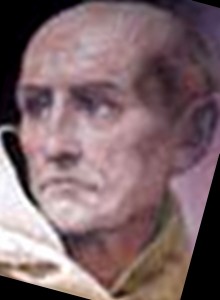 W
WSaint Augustine Webster was an English Catholic martyr. He was the prior of Our Lady of Melwood, a Carthusian house at Epworth, on the Isle of Axholme, in north Lincolnshire, in 1531. His feast day is 4 May.
 W
WSir Francis Weston KB was a gentleman of the Privy Chamber at the court of King Henry VIII of England. He became a friend of the king but was later accused of high treason and adultery with Anne Boleyn, the king's second wife. Weston was condemned to death, together with George Boleyn, Viscount Rochford, Henry Norris, William Brereton and Mark Smeaton. They were all executed on 17 May 1536, two days before Anne Boleyn suffered a similar fate.